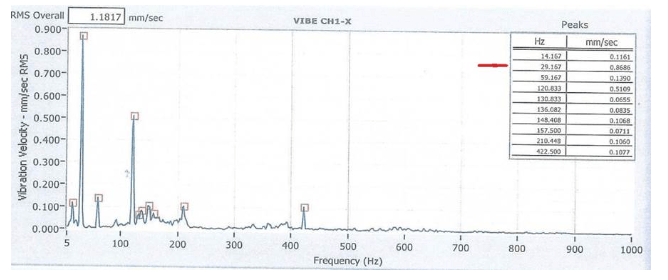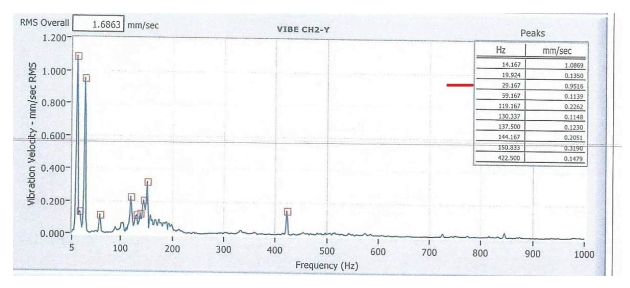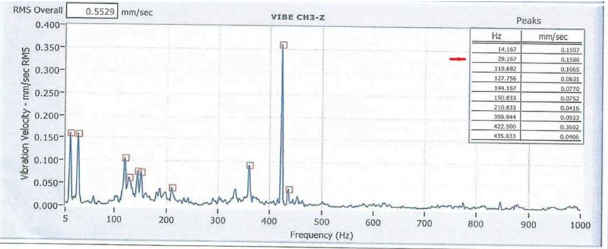The main purpose of the pump vibration testing is to evaluate the operating state and performance of the pump. Through the pump vibration testing, you can detect whether there is abnormal vibration during the operation of the pump, and whether the vibration frequency, amplitude and other parameters are within the normal range. This article will explore how to use the vibration data to evaluate the mechanical condition of the pump, and apply these assessments to forecasting and preventive maintenance programs. The vibration data covers amplitude, frequency and direction information, which provides the necessary information to diagnose the condition of the equipment.

Bearing box vibration is measured by a speedometer or accelerometer sensor. If an accelerometer is used, the software calculates the data and converts it into speed.
Tables 8 and 9 in the API 610 standard provide an acceptable range of pump speed vibrations between the cantilever pump and the bearing.
According to API 610, the overall vibration frequency of the cantilever pump should be less than 3 mm/s (0.12 in/s), and the discrete frequency should be less than 2 mm/s (0.08 in/s).
In the API 610 specification, vibration levels outside the preferred operating area must not exceed 30% of the above limits. This rule applies only to performance testing, as pumps are tested under different flow conditions.
In the mechanical operation test, the pump will operate at the rated flow rate, so this additional 30% limit does not apply to the mechanical operation test.

The overall vibration level is 1.1817 mm/s, which is lower than 3 mm/s, indicating that the overall vibration test results are good.
In the table on the left, it is shown that the maximum amplitude is 0.8686 mm/s and the frequency is 29.167 Hz (synchronous vibration). 0.8686 mm/s is less than 2 mm/s, so the discrete frequency test results are normal.

The overall vibration level was 1.6863 mm/s, lower than 3 mm/s, indicating that the overall vibration was within the normal range.
The table on the left shows a maximum amplitude of 0.9516 mm/s and a frequency of 29.167 Hz (synchronous vibration). 0.9516 mm/s is less than 2 mm/s, indicating that the discrete frequency test results are normal.

The overall vibration level is 0.5529 mm/s, which is lower than 3 mm/s, indicating that the overall vibration is at a normal level.
In the table on the left, the maximum amplitude is 0.1586 mm/s and the frequency is 29.167 Hz (synchronous vibration). Since 0.1586 mm/s is less than 2 mm/s, the discrete frequency test results are normal.
As a provider of electrodynamic shaker table solutions, JOEO offers comprehensive vibration test training and programs, our solutions include a variety of industries, can be tailored to each customer’s unique needs, and provide on-site and online training, to learn more about pump vibration testing, please contact our engineers, We look forward to helping you with better vibration testing.